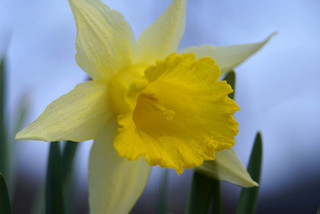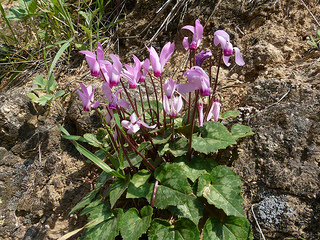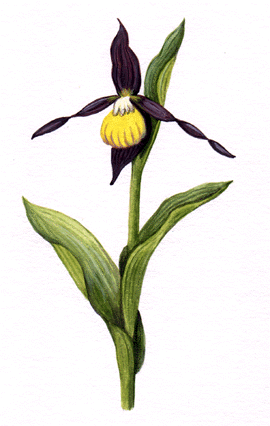Rare Flowers of the Woodland

For about 7,000 years, following the end of the last Ice Age, nearly all of Britain was covered with forest, mostly consisting of broad-leaved trees, oak and elm being the most common species. Then, as iron tools were developed, people began to clear the forests for cultivation and permanent settlements. Over the next 4,000 years or so, techniques advanced, particularly during the roman and Saxon times, and vast areas of forest were destroyed. Most of the remaining forest disappeared during the 16th and 17th centuries to provide timber for boats or charcoal for the iron industry.
During the 19th and 20th centuries, even more of our woodlands were cleared and as a result many of the plants that grew in them have become extinct or rare. Very few of the scattered woodlands date back to prehistoric times. Most have been replanted at some stage and poorly managed. The commercial conifer plantations e.g. pine, common in Scotland, do not provide enough light for ground plants to flourish. Natural pine woodlands are more open, with clearings which allow foxgloves etc. to grow. Some of the most successful broad-leaved woodlands today are those managed by private estates as pheasant reserves.
In spring, the typical British woodland floor is carpeted with bluebells, primroses, celandines, lords and ladies and, sometimes, wild daffodils. These attractive flowers are certainly not as plentiful as they once were and, unless you are the land-owner, it is against the law to collect them.
Here are just three examples of our once common woodland flowers:
 Wild Daffodil Narcissus pseudonarcissus
Wild Daffodil Narcissus pseudonarcissus
Carpets of delicate yellow daffodils in damp woods and grasslands were once a common sight in springtime. Drainage, pasture improvement, woodland clearing and people digging up bulbs have all contributed to its decline.
In the 17th century the daffodil bulbs were used as a medicine for various ailments. Ground-up bulb mixed with barley meal was used to aid the healing of wounds.
The single-flowered stem is up to 36cm in height and it flowers from February until April.

Cylamen Cyclamen hederifolium
Some woodlands in Kent are probably the only places where the cyclamen is still a wild plant. There are many types of cyclamen in gardens but it is rare in the wild.
The plant is 10-30cm in height and it flowers from August until September.
 Lady’s Slipper Cypripedium calceolus
Lady’s Slipper Cypripedium calceolus
This orchid has large striking flowers quite unlike those of any other British orchid. It is one of Britain’s rarest species. A few plants grow at one carefully protected site in Yorkshire.
The plant is 13-45cm in height and it flowers from May until June.
Things to Do
1. Look up the three examples in an illustrated wild flower book and draw the flowers with pencil crayons.
2. Five other woodland flowers are mentioned on this fact sheet. Make a list of them and find out more about them, making your own notes and diagrams.
3. Perhaps you and your school can help to save some of the disappearing woodland plants.
It is quite easy to create a mini-woodland habitat either in your garden or the school grounds and grow a few wild flowers. It’s possible to buy seeds or young plants of native woodland flowers e.g. primrose, bluebell, daffodil, etc, at garden centres. Never dig them up from the wild or collect their seeds! Why isn’t this a good idea?
Wild flower gardening can be a very rewarding pastime – and you’d be doing Britain’s flowers a good turn too!
